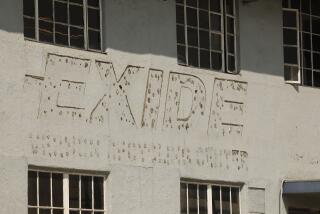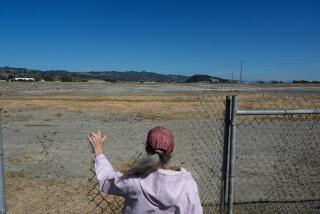Nation’s most ambitious project to clean up nuclear weapons waste has stalled at Hanford
The Energy Department’s most environmentally important and technically ambitious project to clean up Cold War nuclear weapons waste has stalled, putting at jeopardy an already long-delayed effort to protect the Columbia River in central Washington.
In a terse letter last week, state officials said the environmental project is at risk of violating key federal court orders that established deadlines after past ones were repeatedly missed.
Two multibillion-dollar industrial facilities intended to turn highly radioactive sludge into solid glass at the Hanford nuclear site have been essentially mothballed. Construction was halted in 2012 because of design flaws and Energy Department managers have foundered in finding alternatives, according to the letter that threatens new litigation.
This interactive graphic shows how radioactive waste can be turned into glass »
The department has stored 56 million gallons of radioactive sludge left over from the production of plutonium in 177 leaky underground tanks on a desert plateau a few miles from the Columbia River, raising concerns that the material has migrated into groundwater and eventually will reach the largest river in the West.
The original idea was to chemically treat the sludge, mix it with sand and then melt the combination in furnaces to create glass that would be stable for centuries, but the plan was harder than expected because the sludge is so chemically and radioactively toxic. The process required the construction of a massive industrial complex.
The issue of tank waste is just one of the difficult problems at the Hanford site. Last year, the Energy Department halted demolition of its shuttered plutonium finishing plant after plutonium dust repeatedly set off evacuation alarms at the work site, drifted miles away to a public road and coated workers’ cars. In 2017, an old tunnel at the site that stored radioactive debris collapsed.
Maia Bellon, Washington’s Department of Ecology director, said in the letter that federal officials have taken repeated unilateral actions that will make their cleanup unlikely to meet critical deadlines set up in a 2016 consent decree in federal court, which came after the department violated a 2010 legal agreement.
The department has committed to removing and disposing all of the underground tank waste by 2047, though Bellon said the state doesn’t think that is possible at current funding levels. The six-page letter was addressed to Anne White, chief of environmental management at the Energy Department. The Times obtained the letter from Hanford Challenge, a watchdog group that has closely monitored the contaminated facility.
“This is clearly setting the table for litigation,” said Tom Carpenter, executive director of the group. “The Energy Department is going to miss all of these deadlines.”
Review finds more than 500 problems in plant meant to treat Hanford nuclear waste »
Carpenter noted that in February, the Energy Department issued a new cost estimate to remediate the entire Hanford site, taking it from $110 billion to as much as $660 billion, a cost increase that has staggered Congress and has fueled sentiment to cut short the cleanup goals. “They are walking away from important elements of the cleanup,” he said.
A spokeswoman at the Energy Department’s site office in nearby Richland said they had not seen the letter. A spokesman for White did not return calls seeking comment. White announced her resignation last week.
The Energy Department’s original plan was to chemically separate the sludge into separate streams of low-level and high-level waste, sending them to separate glass-making plants. But internal whistleblowers alleged that much of the design was deeply flawed and construction was largely halted by the Obama administration.
Afterward, the Energy Department came up with an alternative plan to begin vitrifying — turning into glass — low-level waste directly taken from the tanks at a newly designed facility, but it abandoned that plan last year, the letter said. It turned instead to a plan to process the waste with mobile equipment at the tanks that could remove the radioactive cesium in the sludge. The cesium would have to be separately glassified or disposed of some other way.
The cleanup was originally outlined in a 1989 legal deal with state officials and the U.S. Environmental Protection Agency, after the federal government lifted the secrecy that had covered up the vast extent of the contamination at the sprawling facility. Nuclear weapons cleanup across the nation has cost about $6 billion a year.
Bellon’s letter lays out a two-part proposal. First, there would be a new round of negotiations over the next six to nine months. Second, the state wants a low-level treatment system operating by no later than 2023, full production of high-level waste glass by 2036 and renewed commitments to removing all tank waste. Without a “holistic approach” to the cleanup, the state will not abide by further changes to its legal agreements, it said.
If the Energy Department doesn’t accept the state’s proposal or the negotiation does not result in an acceptable cleanup program, the state “reserves our right” to pursue action in court, the letter said.
More to Read
Sign up for Essential California
The most important California stories and recommendations in your inbox every morning.
You may occasionally receive promotional content from the Los Angeles Times.











